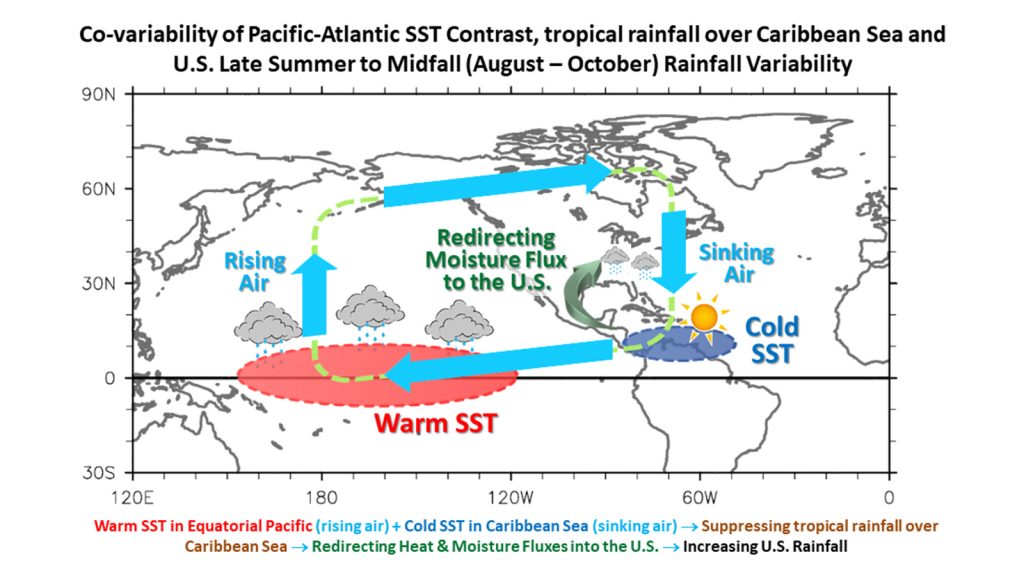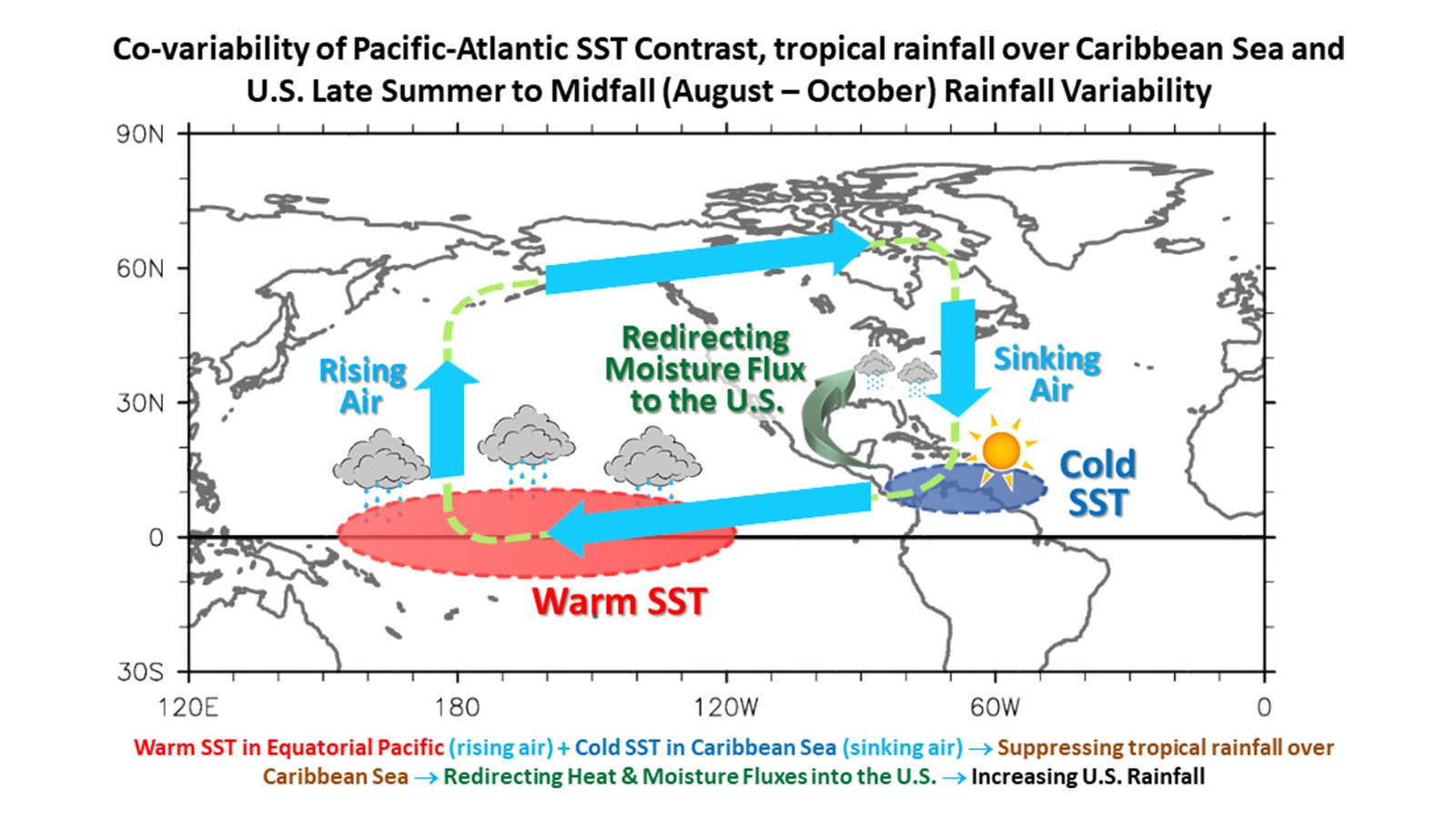In a recent article published in Geophysical Research Letters, AOML and CIMAS scientists investigated U.S. rainfall variability, focusing on the late summer to mid-fall (August-October) season. The main goal of the study was to identify potential predictors of U.S. precipitation during August-October and to explore the underlying physical mechanisms.

There is a well-recognized relationship between the Bermuda High, which is a semi-permanent subtropical area of high pressure in the North Atlantic Ocean, and U.S. rainfall east of the Rockies in peak summer (June-July). In this study it was found that this relationship is not applicable in late summer to mid-fall (August-October), making it difficult for NOAA forecasters to predict rainfall in this region. The low skill of the numerical forecast models leaves a large portion of the U.S. population vulnerable to extreme weather events in this season. Shortly after peak summer, when the Caribbean Sea begins to warm, the Bermuda High weakens, and the western leg of the Bermuda High is displaced eastward into the Atlantic Ocean away from the eastern U.S. seaboard. This shift in the Bermuda High weakens the North American low-level jet, which reduces the supply of warm and moist air from the Gulf of Mexico coming into the U.S. and therefore decreases U.S. rainfall. The results of the study suggest that the Bermuda High is strong enough in peak summer to significantly regulate U.S. precipitation, but in late summer to mid-fall the Bermuda High is much weaker and too far away from the eastern U.S. to influence precipitation directly.
During this study, it is shown in both observations and model simulations that during the August-October season the sea surface temperature difference between the Pacific and Atlantic Ocean influences the intensity of tropical rainfall over the Caribbean Sea. The change in regional rainfall directly influences the North American low-level jet and therefore U.S. rainfall. This newly identified mechanism suggests that the sea surface temperature difference between the Pacific and Atlantic Ocean, and the co-varying intensity of tropical rainfall over the Caribbean Sea, could serve as potential predictors for U.S. rainfall in August-October and may improve forecasts by addressing the U.S. rainfall prediction gap in this season.
AOML co-authors
- Dongmin Kim (CIMAS), lead author
- Sang‐Ki Lee
- Hosmay Lopez
- Gregory R. Foltz
